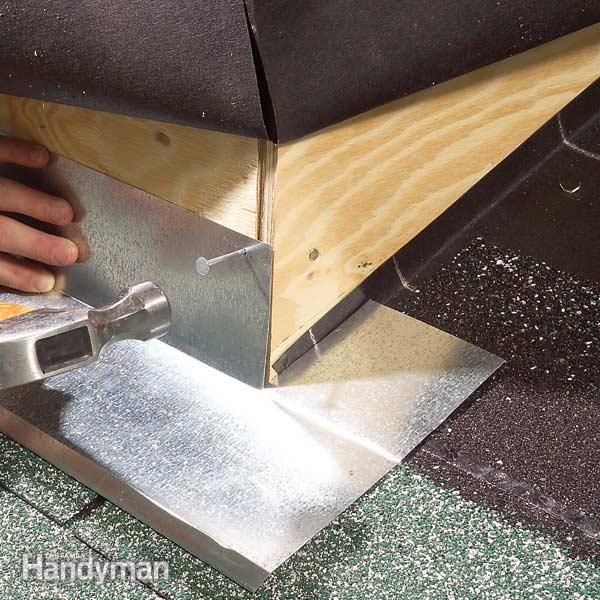Good metal flashing prevents these problems including a specially shaped kick flashing the intersection between a roof and a sidewall can be a rot problem waiting to happen.
Flashing where fascia meets roof.
Roof drip edge flashing at roof eaves gable ends.
Ground zero for roof rot is often where roofs meet walls.
Roof flashing is a very important part of a house.
I cut the tape so that it laps onto the housewrap above and 3 in.
Now nail this first flashing at both its far ends.
Trust our experts to replace your roof.
Roof drip edge flashing serves multiple functions on a building the foremost of which is to assist water in leaving the roof edge with minimum damage to other building components by directing the water off of the roof and into the gutter.
Subscribe http bit ly 2bztksh reliability starts at the top.
Once the flexible flashing is set i apply a piece of housewrap along the wall where the fascia.
Modern standing seam roofs have a different design and the roof wraps around the fascia board completely hiding it at times.
Sidewalls where a roof abuts a wall are potential leak spots and rot spots.
Click to enlarge any image.
Drip edge metal valley flashing dormer chimney and kickout flashing are types of roof flashing that shed water away from the connections between roofs walls chimneys and other building assemblies.
Anyplace where the roof plane meets a vertical wall such as a dormer a chimney or a split level roof flashing is necessary.
Quality roofing material and expert installation are.
Step 6 install the flashing.
If your roof has drip edge installed where the fascia meets your shingles with the gutter hung below the drip edge get some rolled flashing and tuck it up under the drip edge and over the top of the gutter.
Dealing with dips and making clean overlaps metal drip edge flashing is.
I use a wide piece of flexible flashing tape to protect the area between the subfascia and the wall.
Remember to caulk the underside of the flashing with a sealant.
Install valley battens on both ends of the roof valley then attach first flashing 3 4 inches over the roof flange and another 3 4 inches over the fascia if any is present.
It is at the back of the porch roof where the roof meets the house siding.
Flexible flashing tape seals the eave to the wall.
Traditionally the flashing was installed and hidden under the siding.
Once in place fasten the apron with sheet metal screws.









